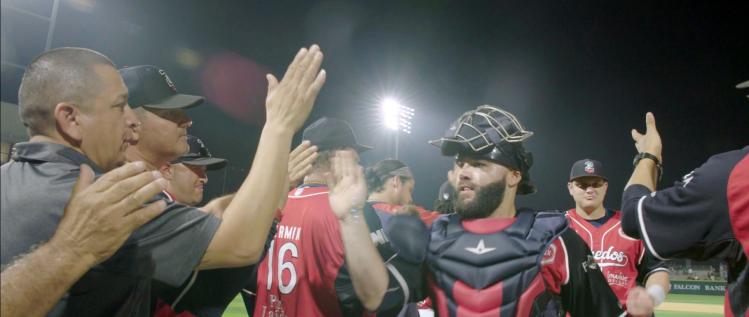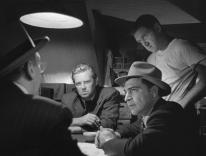
Fans of professional baseball in the United States have long been fascinated by the asterisk (*). The symbol signals a condition out of the ordinary or one requiring clarification. It may be born out of an obsession for purity, rooted in a fondness for statistics and records, as well as for equity, or concealed in baseball’s contorted relationship with what exactly defines cheating. Though it does not appear in record books, the asterisk lives in the popular imagination, ranking right up there with unicorns and the Loch Ness monster. Last year, Baseball Hall of Fame historian John Thorn opined to New York Post sportswriter Mike Vaccaro that “the sprinkling of asterisks is a matter best left to one’s own conscience and understanding.” The appeal to conscience underscores a tendency among baseball insiders to insist on using the asterisk when a beloved record is threatened or when the sport is tarnished by an accomplishment perceived as unfairly achieved.
Among the great “asterisk” narratives is the one concerning the single-season home-run record, first set by Babe Ruth with sixty in 1927, then surpassed by Roger Maris with sixty-one in 1961, and set anew by Barry Bonds in 2001 with seventy-three. Between Maris and Bonds came the race between Mark McGwire and Sammy Sosa, which consumed the 1998 and 1999 seasons. McGwire hit seventy homers in 1998, while the Dominican-born Sosa struck sixty-six, becoming the first Latino, first Black, and first international player to break both Ruth’s and Maris’s records. (Sosa hit another sixty-three in 1999.)
By the logic of those eager to dispense them, the entire list of home-run leaders deserves a giant asterisk. The legacies of McGwire, Sosa, and Bonds are tainted by allegations they used performance-enhancing drugs. Maris’s accomplishment was famously contested on the basis of his having played after baseball extended the length of its season to 162 games from 154, when Ruth played. (Indeed, this is where the myth of the asterisk began—a myth debunked in a 2011 article by journalist Allen Barra. There was never an asterisk next to Maris’s name.) But Ruth had an advantage that is rarely acknowledged. The exclusion of Black players from the major leagues until 1947 meant he did not have to face some of the best pitchers of his time who played primarily in the Negro Leagues. Nor did Ruth have to compete with sluggers like Josh Gibson who, according to some, holds the record with eight-four credited homers over 170 games in 1936.
It’s no surprise that asterisk fever reemerged in a season abbreviated by COVID-19, especially when the postseason included two teams with losing records, the Milwaukee Brewers and the Houston Astros (who are still under the shadow of a 2017 sign-stealing scandal). Some feel that annotating the sixty-game 2020 season with an asterisk would highlight the distinctive challenges faced, honoring resilience and survival in difficult circumstances. Others worry about the integrity of records or the elevation of mediocrity in a shortened season.
Just as Major League Baseball’s postseason play was coinciding with the closing weeks of the national-election campaign last fall, Showtime premiered Bad Hombres. The documentary by Andrew Glazer follows the world’s only binational professional baseball team, the Tecolotes de los Dos Laredos, a triple-A team in la Liga Mexicana de Béisbol. The Tecos play in home stadiums on each side of the border, one in Nuevo Laredo, Tamaulipas, Mexico, and the other in Laredo, Texas, U.S.A. The film focuses on the 2019 season, with particular attention to three players: two Mexican Americans, catcher Luis Flores from Texas and infielder Juan Martinez, a California-born son of immigrants; and rookie backup catcher Cristian Mejía Herrera from Sinaloa, Mexico. From a baseball perspective, there is nothing particularly remarkable about this season, in which the Tecos finished in fifth place in their division with a 60-60 record, or about the players featured in the documentary. According to the team stats, Mejía appeared in only twenty-two games, half of them as pinch hitter. Flores left the team in July to take a job as a high-school baseball coach. These storylines alone are insufficient to carry the film, and they are not developed in a way that inspires a viewer’s emotional investment.
The central character in Bad Hombres is really the border. Béisbol is an entry point into a border parable, and la frontera is the star. The film tells a tale of navigating violence. On the Mexican side, this is represented by drug cartels and their lookouts; on the U.S. side, by the ominous presence of President Donald Trump and the empowered Customs and Border Protection. On the U.S. side, the story is told from the perspectives of environmental and political activists, of Catholic Charities ministering to detained migrants and separated families, and of CBP. All of these are primarily Latino and Latina voices. On the Mexican side, the drama is communicated through image and sound, mostly threatening and militarized, with a soundtrack of gunfire and alarms.
Glazer is not the first filmmaker to title a border documentary after the words made infamous by Trump in a campaign debate (2016), in phone threats to a Mexican counterpart (2017), in tweets (2019), and in jokes (2019). Mexican cinematographer Rodrigo Ruiz Patterson and social-science professor Juan Antonio del Monte Madrigal directed another documentary called Bad Hombres, which has been making the rounds of film festivals since the fall of 2019. (The shared title highlights Trump’s lexicon of racialized pejoratives and his nefarious branding of people and countries deemed threats to the making of America’s greatness.) The project was born out of del Monte’s ethnographic fieldwork with people who had been deported and were living as transient and homeless in the shadow of the wall at the northern border of Mexico, planning their next crossing attempt. The film has been described as “una marginalidad que también tiene su atisbo de resistencia,” marginality with a touch of resistance. In light of American zero-tolerance policies, the directors depict the complexity and multiple vulnerabilities associated with border crossings without victimizing or glorifying migrants—“sin victimizarlos, pero sin glorificarlos,” as reviewer Andreína Longoria put it.
Glazer is also not the first to tell the story of los Tecolotes. Dating back to 1935, the team has had three periods of playing as a binational franchise: 1985–1994, 1996–2003, and 2018–2020. Anthropologist Alan Klein chronicled the Tecos in his 1997 study Baseball on the Border: A Tale of Two Laredos. For three decades Klein has produced a rich body of accessible scholarship specializing in sport, society, and culture, from his 1991 exploration of Dominican baseball in Sugarball to his 2020 consideration of basketball on the Pine Ridge Reservation in Lakota Hoops. For Klein, the Tecos are a study in nationalism in all of its dimensions, as well as participants in the border’s concomitant tensions of belonging and otherness. His critical attention to the attitudes and relationships on the team between the Mexican nationals and the limited number of permitted “importados,” primarily from the United States, underscores a major lacuna in Glazer’s Bad Hombres.
At their 2018 binational reconfiguration, the Tecos benefitted from a 2016 rule change that expanded the definition of “native Mexican” to include Mexican-American players who could provide the proof of ancestry necessary to secure a Mexican passport. It is estimated that in 2019, the season covered by Bad Hombres, at least 30 percent of la Liga Mexicana de Béisbol were Mexican Americans now considered to be domestic rather than foreign players. A look at the Tecos fifty-player roster indicates at least fifteen Latinos were part of the 2019 season. It is likely that the majority, if not all, were Mexican Americans. The importados included under the limit hailed from Cuba, the Dominican Republic, the United States, and Venezuela.
The amended rule redefining Mexican eligibility made the entire league essentially binational. In his 2019 article “Home and Away: American Ballplayers Are Flooding the Mexican League,” journalist Joseph Bien-Kahn draws attention to another border team in the league, the Tijuana Toros. While los Toros do not have stadiums on both sides of la frontera, the team is composed of a majority of “northern imports; Mexicans by the letter, but not the spirit, of the law.” While Mexican by redefinition, in Mexico these Mexican-American ballplayers are Americans, regarded as unregulated usurpers threatening jobs of native-born peloteros. The timing of the change coincided with the Trump administration’s growing antagonism toward immigrants and increasingly aggressive actions at the southern U.S. border.
Bad Hombres did not need baseball as a hook to highlight border issues. Béisbol is a border and migration narrative on its own terms. Toward the end of the film, Glazer constructs comparative tension by cross-cutting scenes of a CBP nighttime operation against border-crossers with a Tecos night game in which the team is trying to keep slim playoff hopes alive. The parallel is elusive. Is it his point that both are games, or is Tecos baseball a metaphor for border crossings by desperate migrants? The end result is a disjointed storyline that is neither a sufficiently developed treatment of border realities nor a compelling example of sport documentary as social and political critique. From the perspective of Mexican baseball, it reflects an observation made by Klein that “the border has been able to prevent Americans from ever realizing the rich tapestry that has been woven in the country to the south.... Mexican League baseball has never really been thought of as anything but an elephant’s graveyard, where ballplayers who can’t quit on their own (with dignity) go to die.”
The story Glazer missed became even more relevant with the December 2020 decision of Major League Baseball to finally recognize, as many have long known, that the caliber of play in the Negro Leagues was major-league quality. The implications of this decision may well toss all the “sacred” records into asterisk territory. In his biting commentary “MLB Elevating the Status of Negro Leagues is the Problem, not the Solution,” columnist Clinton Yates cuts to the heart of one of the enduring problems in professional baseball in the United States, calling it “the most economically abusive sport in this country. Baseball is the sharecropping of American sports.” It was the prospect of economic enhancement, racial inclusion, and better treatment that encouraged Black players from the Negro Leagues to spend time in la Liga Mexicana de Béisbol prior to the reintegration of Major League Baseball. But it is worth noting that the numbers posted during those seasons, like those of Josh Gibson in 1940 and 1941, will not count toward the amended statistics. Low salaries also left room for Mexican League owner Jorge Pasquel to successfully lure a few MLB players away from their teams in the mid-1940s despite the threat of lifetime bans. In Mexico, financial benefit incentivized colorline blindness for white ballplayers. Even to this day, Mexican Americans and U.S. importados who aren’t on Major League rosters are drawn to play in the Mexican League by higher salaries and better lodgings and food on the road, as well as by the more affordable cost of living. In a 2018 interview with his hometown California newspaper, Juan Martinez, one of the Tecos ballplayers featured in Bad Hombres, explained: “The average player makes about $1,000 a month starting out in the minor leagues in the U.S. with the salary increasing about $100 per year.... In the Mexican League, most players make between $4,000 and $10,000 each month.”
In the story of béisbol, at least since the 1930s, U.S. Americans are the migrant workers. Mexico, with a comparable professional league, was and remains a land of opportunity. In U.S. baseball, asterisks inhabit the intersections of race and migration. As a close and careful look at the long and complicated relationship between béisbol and the border reveals, Bad Hombres itself should also be viewed with an asterisk.
For more, listen to the interview with the other on the Commonweal Podcast.
Please email comments to [email protected] and join the conversation on our Facebook page.
Previous Story
Biden the Catholic, Part Two
Next Story
‘The Miracle of Everything’


